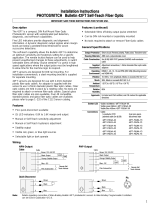
11
The task is to measure the
height of a tree at a distance of
25 m / 82 ft. on level ground.
The instrument is tilted so that
the hair line is seen against the
tree-top (apex). The reading
obtained will be 48 per cent (ca
25.5°). As the distance is 25 m /
82 ft. the height of the tree is 48
/ 100 x 25 m = ca. 12 m or
equally 48 / 100 x 25 m = ca. 12
m or equally 48 / 100 x 82 ft. =
ca. 39 ft. To this must be added
the eye’s height from the
ground, e.g. 1.6 m or 5 ½ ft.
Their sum is 13.6 m or 44 ½ ft,
the height of the tree.
In very exact measurements,
and particularly on sloping
ground two readings are taken,
one to the top, the other to the base of the trunk. When the trunk base is below eye
level the percentages obtained are added. The total height is the sum percentage of
the horizontal distance. For example, it the apex reading is 41 % and the ground
reading 13 %, the total height of the tree measured from a distance of 25 m / 82 ft. is
(41 + 13) / 100 x 25 m = 54 / 100 x 25 m = ca. 13.5 m or equally in feet (41 + 13) / 100
x 82 ft = 54 / 100 x 82 ft = ca. 44 ½ ft.




















